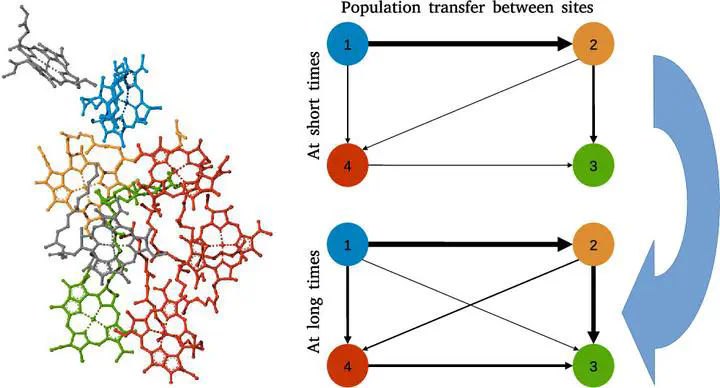Impact of Solvent on State-to-State Population Transport in Multistate Systems Using Coherences

Abstract
Understanding the pathways taken by a quantum particle during a transport process is an enormous challenge. There are broadly two different aspects of the problem that affect the route taken. First is obviously the couplings between the various sites, which translates into the intrinsic “strength” of a state-to-state channel. Apart from these inter-state couplings, the relative coupling strengths and timescales of the solvent modes form the second factor. This impact of the dissipative environment is significantly more difficult to analyze. Building on the recently derived relations between coherences and population derivatives, we present an analysis of the transport that allows us to account for both the effects in a rigorous manner. We demonstrate the richness hidden behind the transport even for a relatively simple system, a 4-site coarse-grained model of the Fenna–Matthews–Olson complex. The effect of the local dissipative media is highly nontrivial. We show that while the impact on the total site population may be small, there are noticeable changes to the pathway taken by the transport process. We also demonstrate how an analysis in a similar spirit can be done using the Förster approximation. The ability to untangle the dynamics at a greater granularity opens up possibilities in terms of design of novel systems with an eye toward quantum control.